The Rich History behind adidas EQT via Hypebeast

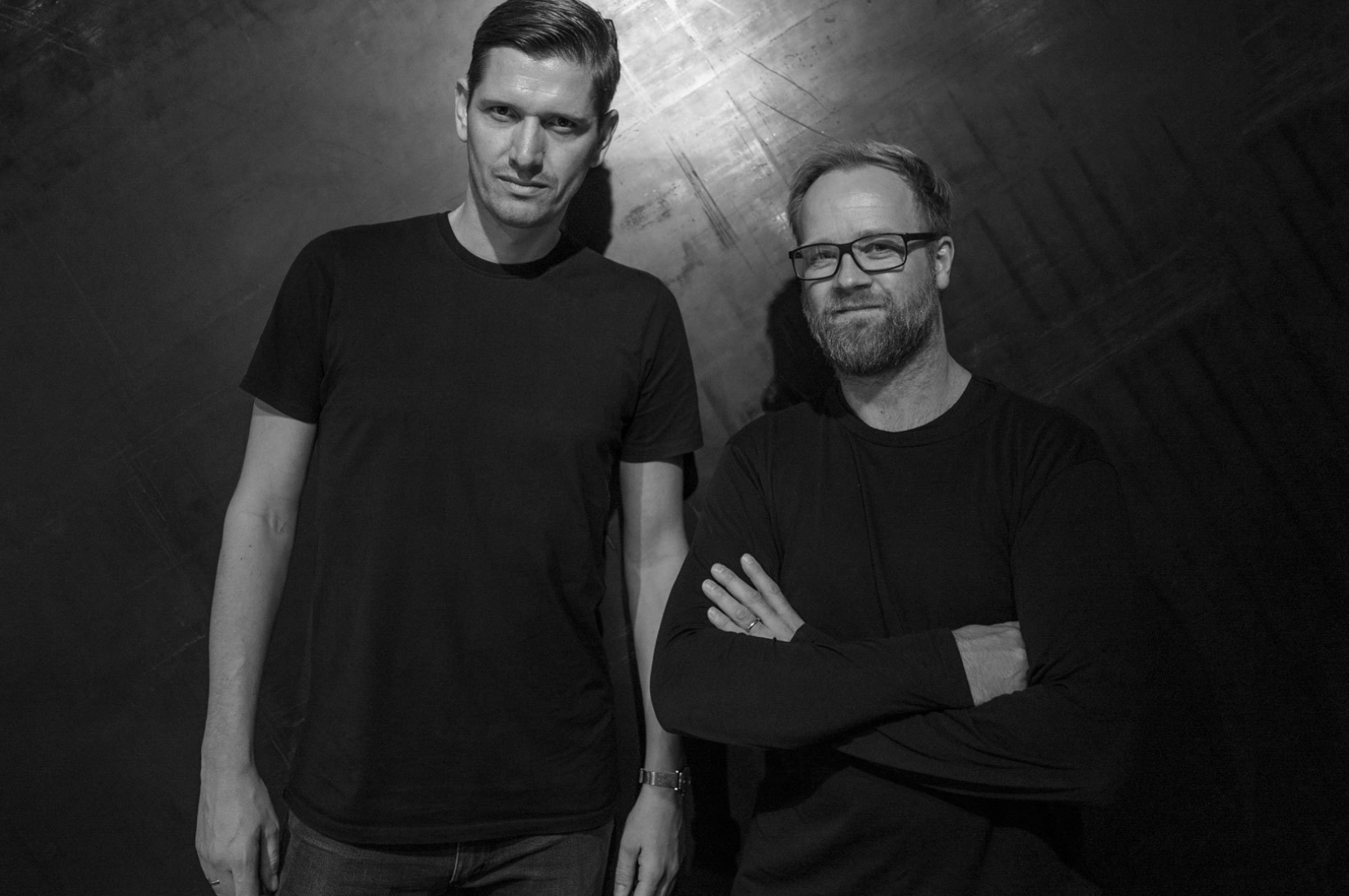
Hypebeast recently sat down with Global Design VP Nic Galway and Product VP Torben Schumacher to discuss the origins of the esteemed Equipment line from adidas. With the series going through all sorts of evolutionary changes moving into 2017, it’s important to understand the functional aspect behind the range when it was first introduced in the early 90’s.
The ‘80s was an era of overconsumption with its seemingly irrepressible outputs in technology, music and fashion. Needless to say, all aspects of life were vibrant and loud. To combat the Me generation, the ‘90s stripped away non-necessities — propelling the sense of individuality as well as alternative media into the realm of popular culture. Recounting that minimalist approach, adidas marketing mainstay Robert Strasser and design guru Peter Moore spawned the brand’s “no-bullshit” Equipment line (EQT) in 1990. The pair desired to create a new department of sneakers that championed founder Adi Dassler’s impactful modus operandi in creating silhouettes that were simple, functional and performance-based. As a whole, EQT centered upon a no-nonsense lineup of shoes and apparel that spans every sport imaginable from running, volleyball, basketball, soccer as well as fencing.
From the get-go, the EQT design process involved more elimination than preservation. It also continues to embrace innovation in all aspects, from the materials used to the technologies developed without ever compromising quality. Strasser and Moore introduced Torsion technology to the world which enabled EQT wearers to move the front and back of their foot separately. Fledgling sneakers in the line touted the iconic brand insignia alongside a midfoot support system in which three pliable and lightweight strips wrap around the foot for an impressive feel and unmatched support. Nowadays, EQT is more tech-savvy than ever and it’s all thanks to the hard efforts of adidas Originals’ VP of Product, Torben Schumacher and VP of Global Design, Nic Galway.
Schumacher first joined the brand in 2004, stepping into the role of Assistant Project Manager of Strategic Marketing and has relentlessly climbed each rung of the corporate ladder to earn his executive role today. On the other hand, Galway and his design team has made waves throughout the entire sneaker industry by creating some of the hottest silhouettes: the Yeezy Boosts, Qasa Racer, Tubular, Pure Boost, NMD and now, the forthcoming EQT Support 93/17. During Art Basel 2016, HYPEBEAST sat down with Schumacher and Galway to discuss core principles of the Equipment line, its ever-evolving design process as well as pivotal moments in the brand’s rich history and the ultimate purpose of its ongoing collaborations.
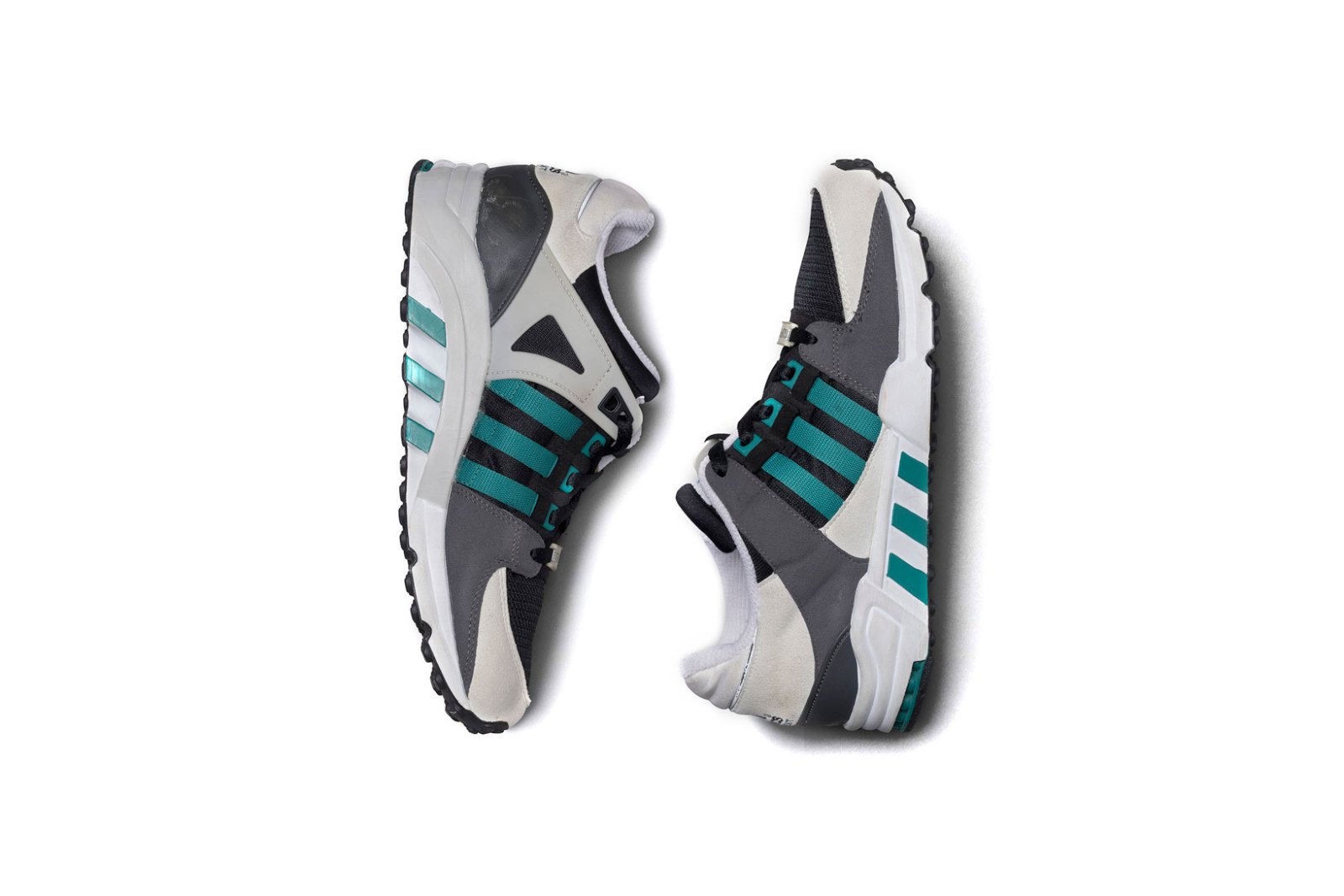
The EQT range is regarded as a collection of the best adidas sneakers. How has the brand tackled such an ambitious feat so far?
Nic Galway: For us, when we started the project and with the design teams in particular, the focus was not on how something looks rather it’s about why something was done. It’s really understanding why they did what they did and what should we do for it today. For me, Equipment was the moment in the ’90s where they said alright let’s be our own inspiration. Let’s not worry about others, let’s do what’s right for us. I believe the moment we are having right now is reflected in the fact that we have a confidence about who we are and we’re not worried about others. We’re using our past to really create our future, on our own terms. That’s the important thing. Provided we do that then we can’t decide the outcome, but we will be proud of what we accomplish.
Torben Shumacher: I think it’s being true to who you are and not following other brands or trends. Have a strong opinion and the beauty of the adidas brand is that we have that rich archive history and the essence of it all is very relevant and very much ingrained our everyday doing. That’s key to it.
How do you strike a perfect balance between form and function for the EQT silhouettes?
NG: One of the things that I really encourage the design team to do is to make things as well draw these things. I think in combination this is important, because if you just draw things, you can pretend that something works. When you make something, you find out very quickly. Also, by making things you go on a journey. When you’re drawing, you’re drawing what’s in your head, but when you make something, it doesn’t turn out quite as you thought. However, it tells you something else. You make objects in three dimensions and I find that really interesting because a lot of the products that we have been working on recently are a result of making rather than just drawing. We are looking at the object as a whole and realizing what we can strip away and what remains important. I think that’s a different approach to design than what we used to do in the past.
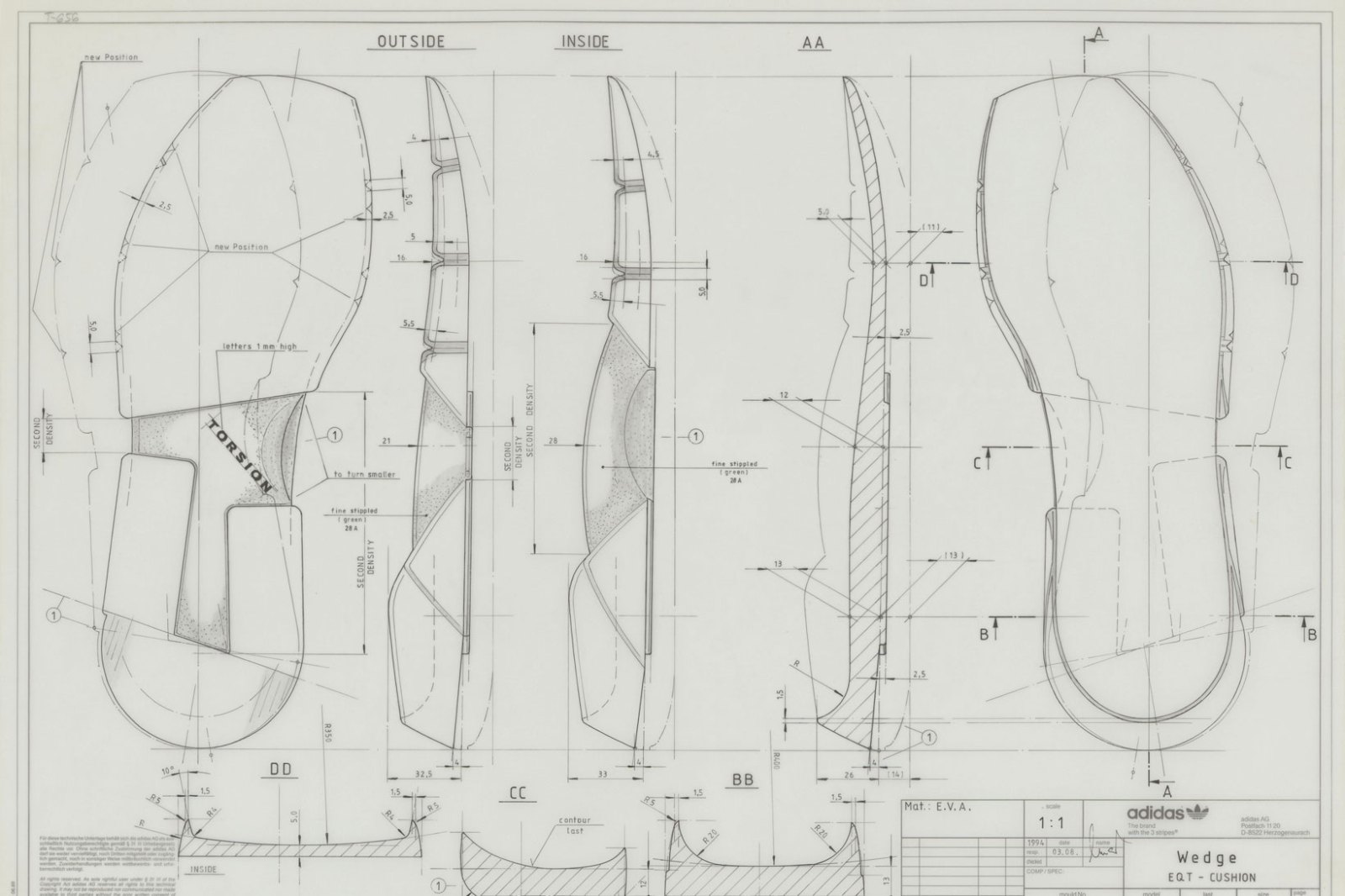
Are there distinct differences in the design process now than in years past?
NG: There are huge differences. We started a journey by becoming a collaborative brand. We’ve had great opportunities to work with amazing artists from fashion to music to art. Of course, you learn things visually from that, but importantly to me, you learn how other people work and how they get their ideas. The journey we’ve been on is to bring those learnings into the house of adidas. In the last couple of weeks, we started to open MakerLabs, spaces dedicated for designers or others as well to come and make things. I feel like that’s important. You get away from being sat in front of the computer. There’s a place for computers, but it can’t be the center of everything that’s created.
TS: Creativity is not limited to product or design. It’s a mindset that one lives and of course, functions from. How we bring these to the market and how we talk about these things, projects. And how we build community and start a conversation. That’s been really important to us. It’s not technology or creation that we focus only.
Describe the EQT in terms of design and product.
NG: Past, present, future. I often tell my designers that if you think of something very iconic and you had five seconds to sketch it what would you sketch? You would focus on what’s important. That’s the past. The future, we have the best innovations in the industry we right now. We use them in unexpected ways and start a new conversation with that and that’s what we’re able to do for Originals.
TS: The EQT is one of the most iconic stories from our archive that was very disruptive and very bold at the time. It’s still very relevant today if you focus on what was the essence and idea of the past, but then again, open up to today’s reality and culture. That’s the beauty of this concept. How the collection tells a story from the past and then takes people on a journey towards the future and you can really see the journey, the range. That’s what makes the EQT beautiful and unique.
Especially with your latest collaboration with Pusha T. The EQT has reflective panels that is very reminiscent of the ’90s, but the way you incorporate it, has a very futuristic feel.
NG: And that’s the great thing about collaboration and memories. Memories might be how something looks, like you just said, it can also be reflectivity. It’s so ’90s. Yesterday, we were talking about neon colors. Neon colors became available to people in the ’90s. It’s hard today to remember how impactive to see something for the very first time and that’s the power of that. Collaboration allows us to see things that we take for granted.
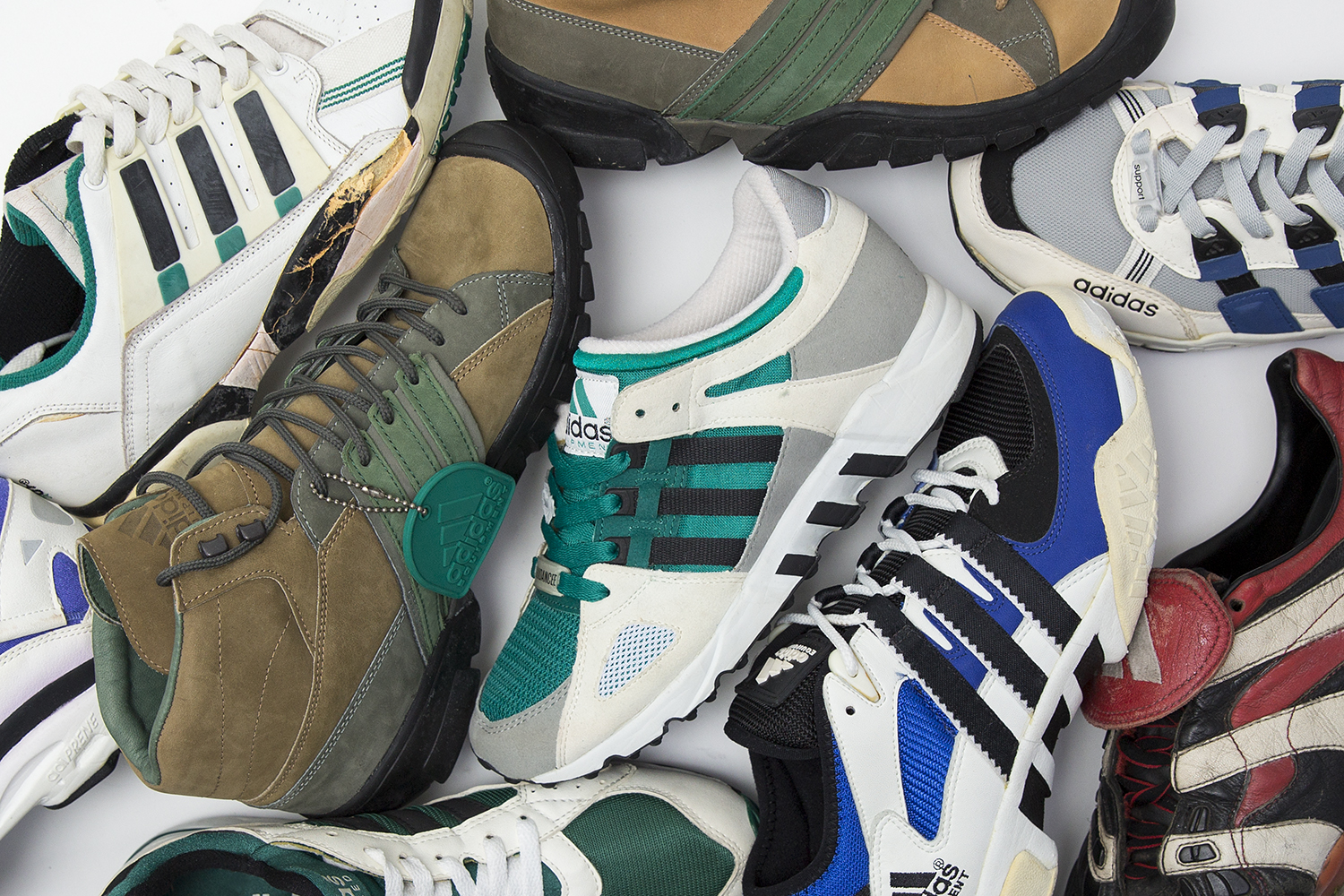
What are some key takeaways that you guys learned in the EQT project?
TS: I think that with any project it’s important to be yourself and to be honest to who you are and don’t try to be trendy or fashionable. Have an honest perspective that is informed by yourself as a brand and who we are as a brand. However, reinterpret it for today, for the future. I guess that’s relevant for any project, but it’s very much comes to life in the Equipment line.
NG: We talk about it a lot. There’s obviously lots of products that we curate and we very much believe in its successes. However, true success in my eyes is when we look back in this period of time, let’s say five or ten or fifteen or twenty years time and say what did adidas look like? I hope people will say that adidas found a confidence and they weren’t afraid to ask questions or show something different. I hope people will reference the individual shoes, but I more hope that they say it was an exciting time for sneaker culture. We will always keep it up.
Can you tell us more about the upcoming adidas EQT Support 93/17 model?
TS: I think it’s the perfect combination of how iconics and innovation can come to life. For us it’s really important to celebrate our archive which is unique to our brand and the industry, but don’t be stuck there. Don’t be a heritage brand, but a culture brand. We pretty much brought all of our technologies into [the EQT Support 93/17] and the product came to life. The beauty of it is that it doesn’t compromise function, it features the very best technology in the industry with BOOST and primeknit. Yet, it is really an EQT product and it is very easy to spot.
NG: If you think of the original Equipment taglines like “no bullshit”—that can’t be what it was in the ’90s today because that won’t be true now. But if you’re saying like what is essential today, it’s BOOST. There’s no question, so it has it. It’s about simplicity, it’s about stripping away everything that’s unnecessary. That’s very true to what EQT stood for. And yes, there are some iconic elements which were there in the beginning and they are now. That’s what gives us context. New material like BOOST was really difficult to mold, it really challenged us. We want to make something much more three-dimensional. We made lots of mistakes in the beginning. It was hard, but we learned so much and now we know how to make it. It’s opened new possibilities for us in the future. That’s also really important, it’s challenging ourselves as well as creating dialogue.
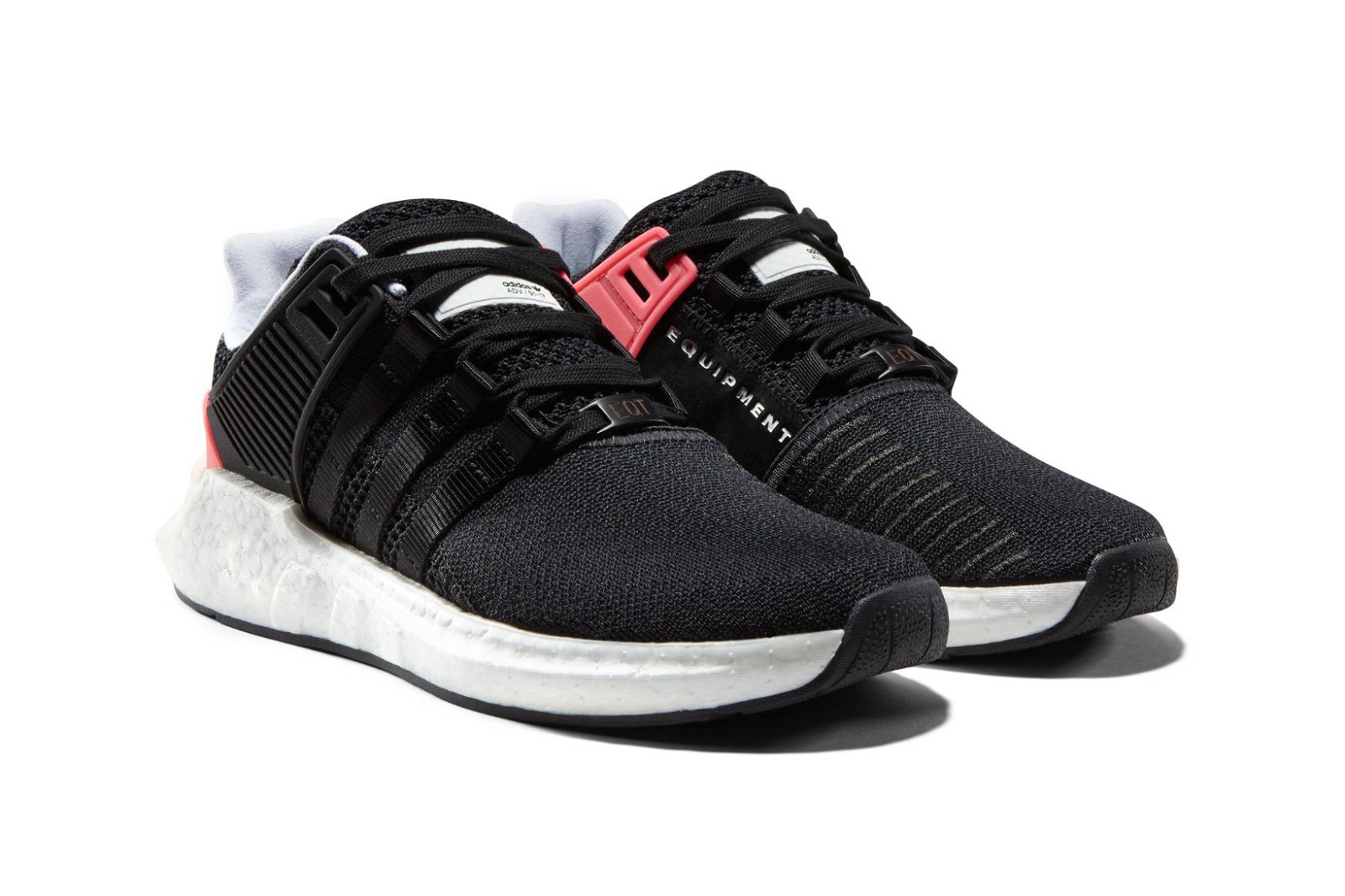
How do you decide the color palette for these new releases?
NG: We agreed very early on that it’s not about a trend, it’s about understanding why did they pick Equipment Green. Basically, in the ’80s, it’s been so excessive. There was so much going on. Colors, prints, graphics, everything going on. Peter Moore came in and let’s cut it straight through and make this very tight palette, color and material. He introduced Equipment Green which is very iconic. For us today, if we’re going to keep that same value then we should have the confidence to say that, that color’s iconic but we’re going to do something different. Something unexpected because that’s what they did themselves.
From the entire EQT archive, which one is your favorite?
TS: That’s a tough question. I really like the EQT Support a lot. It’s simplicity and shape. Growing up in Germany at that time, it means a lot more than just a product. There’s a strong cultural connection so it is much more than just design of the shoe. I pick that one.
NG: Mine’s different. I approach sneaker culture with just who I am. It’s not about one sneaker, it’s about the elements. The things that stick to my head from my youth are the lace strips, the Torsion bar … it’s not just one shoe, it’s those memories. It’s about what that meant to me growing up and that’s how my creative team actually work today. It’s not about one object. Equipment for me doesn’t mean one shoe, it just means what was happening. This idea of German engineering. It’s about those iconic details that I really carried with me and I loved that in this company.







